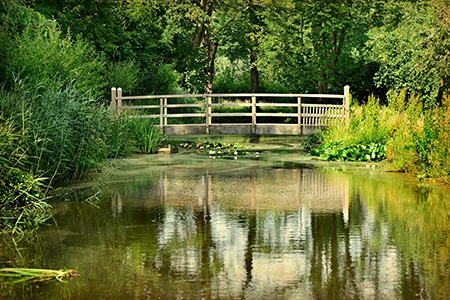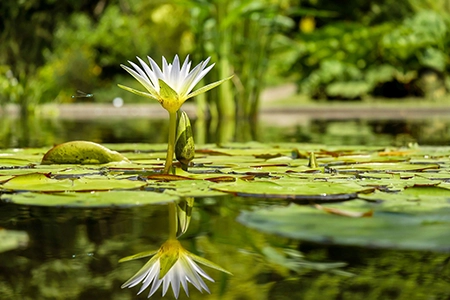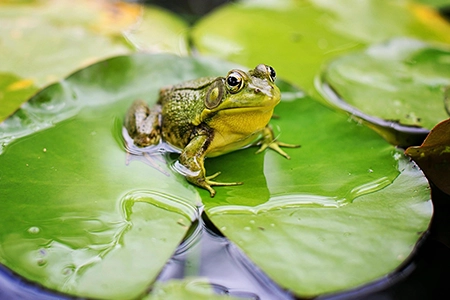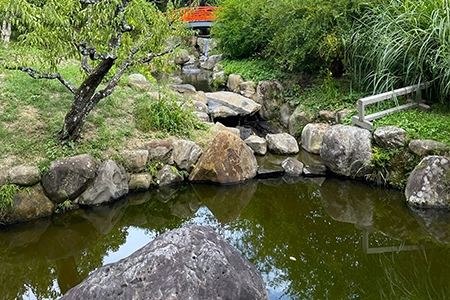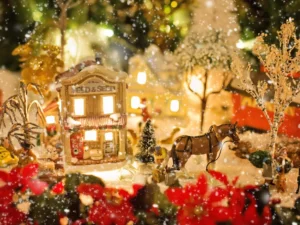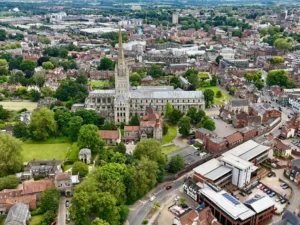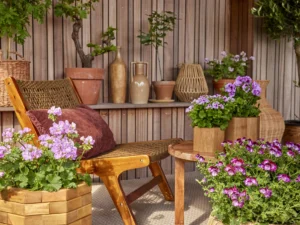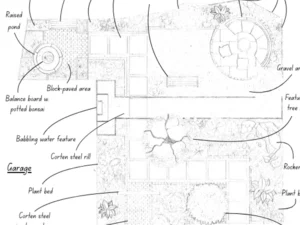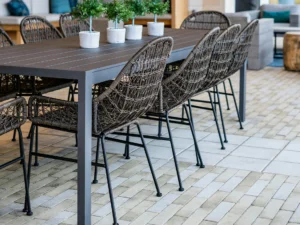Introduction
Garden water features are a delightful way to enhance the aesthetic appeal and ecological value of your outdoor space. Among the various options available, natural ponds and fish ponds are two popular choices.
Each type offers unique benefits and drawbacks, making the decision a matter of personal preference and specific garden needs. This article explores the characteristics of natural and fish ponds, their styles, benefits, and drawbacks, and provides guidance on choosing the right pond for your garden.
What is a Natural Pond?
A natural pond is designed to mimic a natural water body, integrating seamlessly with the surrounding landscape. Unlike traditional, more structured garden water features, natural ponds focus on creating a balanced ecosystem that supports local wildlife, including plants, insects, amphibians, and birds.
These ponds often have irregular shapes and diverse plantings, which help them blend organically into their environment. Natural ponds are free of artificial features, relying instead on native plants and natural materials to achieve a harmonious and self-sustaining habitat.
By incorporating natural ponds as garden water features, you can create a tranquil and ecologically beneficial area that enhances both the beauty and biodiversity of your garden.
Popular Styles of Natural Ponds:
- A wildlife pond
- A bog garden
- A rain garden pond
- A swimming pond
A Wildlife Pond
A wildlife pond is a type of natural pond designed specifically to attract and support local wildlife. These garden water features are characterised by native plants and shallow edges, which make it easy for amphibians and birds to access the water.
The presence of native plants not only provides food and shelter for various species but also helps maintain the ecological balance of the pond. By creating a wildlife pond, you can support a diverse range of wildlife, turning your garden into a thriving ecosystem.
A Bog Garden
A bog garden is another style of natural pond, characterised by water-saturated soil and plants that thrive in such conditions. This type of garden water feature typically includes moisture-loving plants like irises, marsh marigolds, and pitcher plants.
Bog gardens are particularly effective at supporting a unique range of plant and animal species that prefer wetland environments. These ponds not only add visual interest with their lush, green appearance but also contribute significantly to local biodiversity by providing a specialised habitat.
A Rain Garden Pond
A rain garden pond combines the principles of rain gardens and natural ponds, creating a feature that captures and utilises rainwater runoff from roofs or paved areas. These garden water features are designed to handle stormwater effectively, reducing erosion and filtering pollutants before the water returns to the groundwater system.
Rain garden ponds often include a variety of water-tolerant plants that can withstand both wet and dry periods. This type of pond not only manages water efficiently but also enhances the aesthetic appeal and ecological value of your garden by providing a habitat for pollinators and other wildlife.
A Swimming Pond
Unlike traditional swimming pools that rely on chemicals for water clarity and safety, natural swimming ponds use biological filters and plants to create a self-sustaining, eco-friendly environment. Within this style of pond you will have different zones, such as a swimming zone and a regeneration zone. The latter tends to encompass the former, as the regeneration zone is made up of aquatic plants and acts as a biological filter so that the water in the swimming zone is kept clear.
Benefits of Having a Natural Pond
- They are perfect for increasing biodiversity
- They tend to be low-maintenance
- They have a range of environmental benefits
Drawbacks of Having a Natural Pond
- The initial setup can prove to be labour-intensive
- In some cases they can take up large amounts of space
- Seasonal changes can affect the aesthetic of the pond so this will need to be managed
How to Build a Natural Pond
Planning and Design
Choose a spot that receives a good balance of sunlight and shade. Too much sun can lead to excessive algae growth, while too much shade can limit plant growth. Determine the size and shape of your pond. Natural ponds often have irregular, freeform shapes that mimic natural water bodies.
Mark the Pond Outline
Use a rope, garden hose, or spray paint to outline the desired shape of your pond on the ground.
Excavate the Pond Area
Start digging within your marked outline. Aim for varying depths to create different habitats for plants and wildlife. Include shallow edges and deeper areas to support diverse plant and animal life. Remember, not to make it too neat as you are trying to achieve a natural aesthetic.
Prepare the Base
Clear the hole of anything that could puncture the liner or cause a basin to sit at an angle. Next, yay down a protective underlayment to cushion the pond liner.
Lay the Pond Liner
Spread the pond liner over the hole, ensuring it covers all surfaces with some overlap around the edges. Don’t forget to smooth out any wrinkles and press the liner into the contours of the hole.
Secure the Liner and Fill the Pond
Place rocks or stones around the edge of the pond to hold the liner in place and create a natural look.
Fill the Pond
Begin filling the pond with water. Gradually smooth out the liner and adjust the edges as needed. Use rainwater or dechlorinated water to avoid harming plants and wildlife.
Introduce Plants
Use a range of marginal, submerged and floating plants to ensure that your pond will be well oxygenated and will provide plenty of shelter for any future wildlife visitors.
Create Habitat Structures
Place logs, rocks, and branches in and around the pond to create habitat for wildlife. These structures provide shelter for fish, amphibians, and insects. You will also need to ensure that there is a banked area within the ponds edge so that wildlife can safely get in and out of the pond.
Maintain Water Quality
Allow the pond to establish itself naturally. Test the water regularly to ensure it remains balanced. Avoid using chemicals that could disrupt the ecosystem.
Attract Wildlife
Encourage wildlife to visit your pond by adding native plants around the perimeter and providing nesting sites. Birds, frogs, dragonflies, and other creatures will soon make your pond their home. It is important to make a wildlife corridor to your pond so that smaller animals will have safe passage to and from the pond without the threat of predators.
NGS – Your Pond Experts
We pride ourselves on being your go-to experts for all things related to garden water features, particularly ponds. Whether you envision a large pond teeming with local wildlife or a smaller water presence perfect, which is easy to maintain but still invites in smaller creatures our wealth of experience and expertise in pond design, installation, and maintenance will help you achieve your vision.
From the initial consultation to the final touches, we work closely with you every step of the way to ensure your pond perfectly complements your garden’s aesthetic and meets your specific needs. Our skilled team carefully considers factors such as space availability, environmental conditions, and desired pond features to craft a customised solution that exceeds your expectations.
To find out more about how we can help you build your very own wildlife haven, head to our homepage and click the ‘Make an Enquiry’ option!
Further Reading
Curiosity on this subject not satisfied? Here are some more articles that may interest you:
Revitalise your Pond – Best Oxygenating Plants for Clearer Waters
Vast to Vibrant: Big Garden Ideas for Every Season
Small Garden Ideas for a Big Impact
A Wildlife-Friendly Garden: Harmful Features and Solutions
Water Management 101: Vital Role of Garden Drainage Solutions


